Abstract
The growth of carcinoma of the human large bowel was studied in the first 2 passages in immune deprived mice. The tumours were obtained from large bowel resections on 3 people. There was a strong histological similarity between the patient's tumour and the tumour that grew subcutaneously in the mice 2-8 months after implantation. One dissimilarity observed was a higher mitotic index in some of the tumours growing in the immune deprived animals. In the second passage of the bowel tumours, cells were implanted into groups of 8-10 animals in the following sites: subcutaneous, intramuscular, intravenous, intrahepatic, intraperitoneal and intrathoracic. Growth of tumour was observed from all 3 tumours when they were implanted subcutaneously, intramuscularly, intraperitoneally and intrathoracically. Infiltration of muscle by tumour was a frequent finding. Lung metastases developed after intravenous injection of cells in 1 of the 3 tumours. In none of the 3 tumours did growth follow injection of cells directly into the substance of the liver. On no occasions were spontaneous metastases observed.
Full text
PDF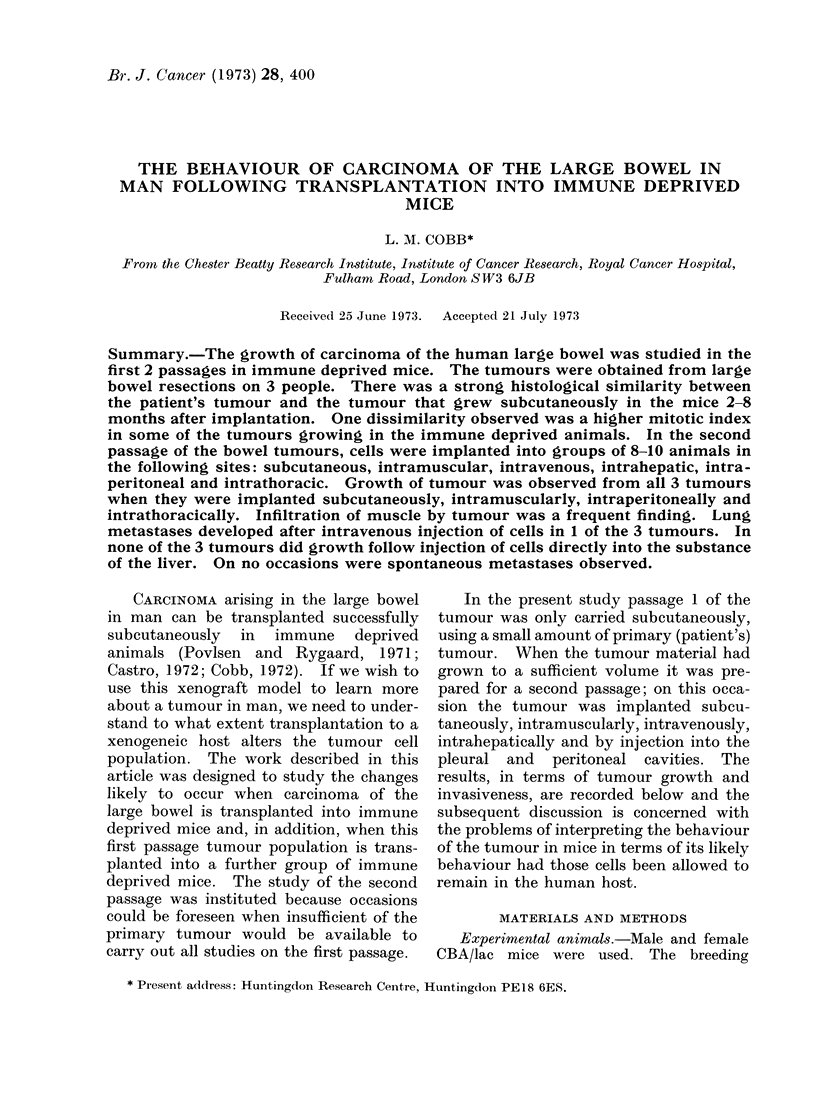
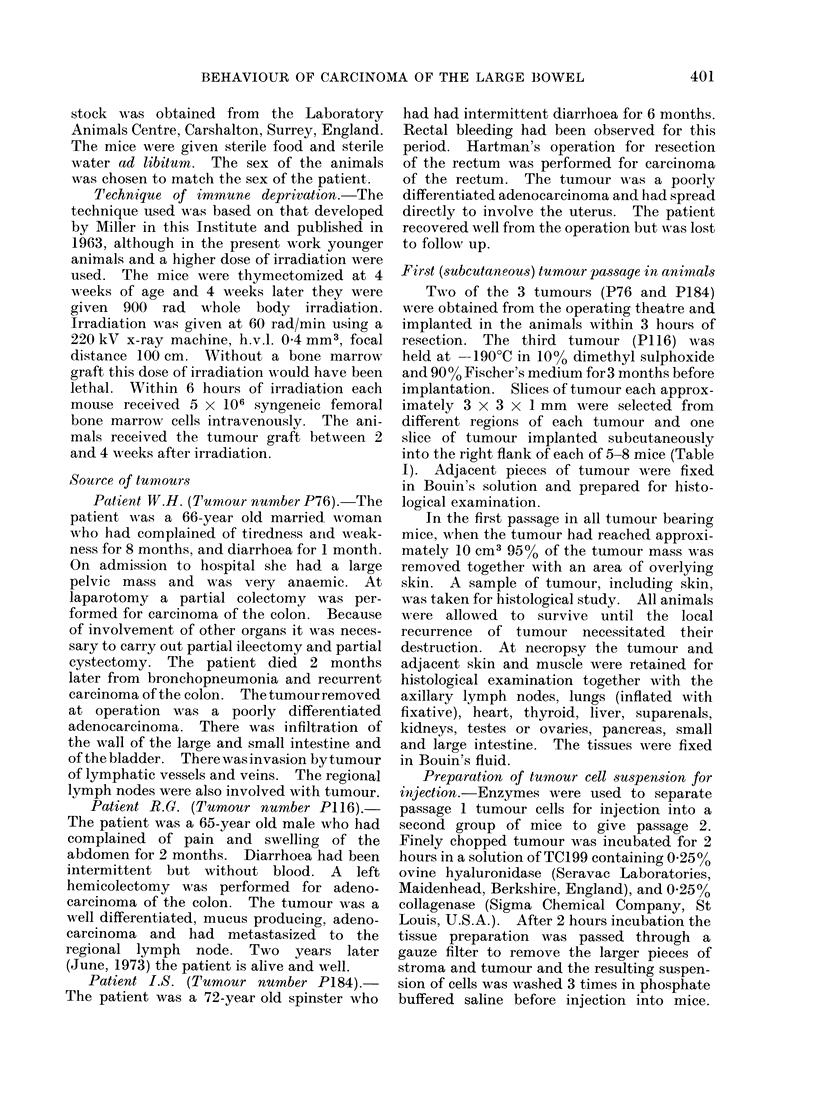
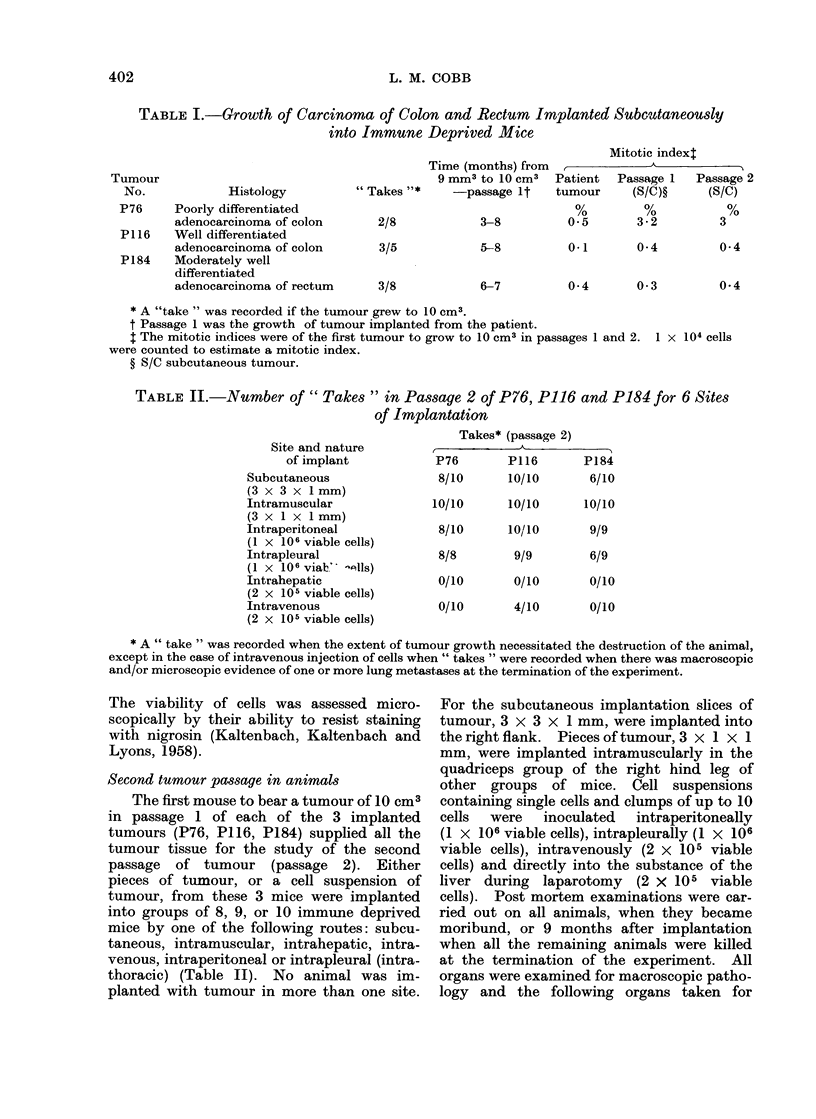
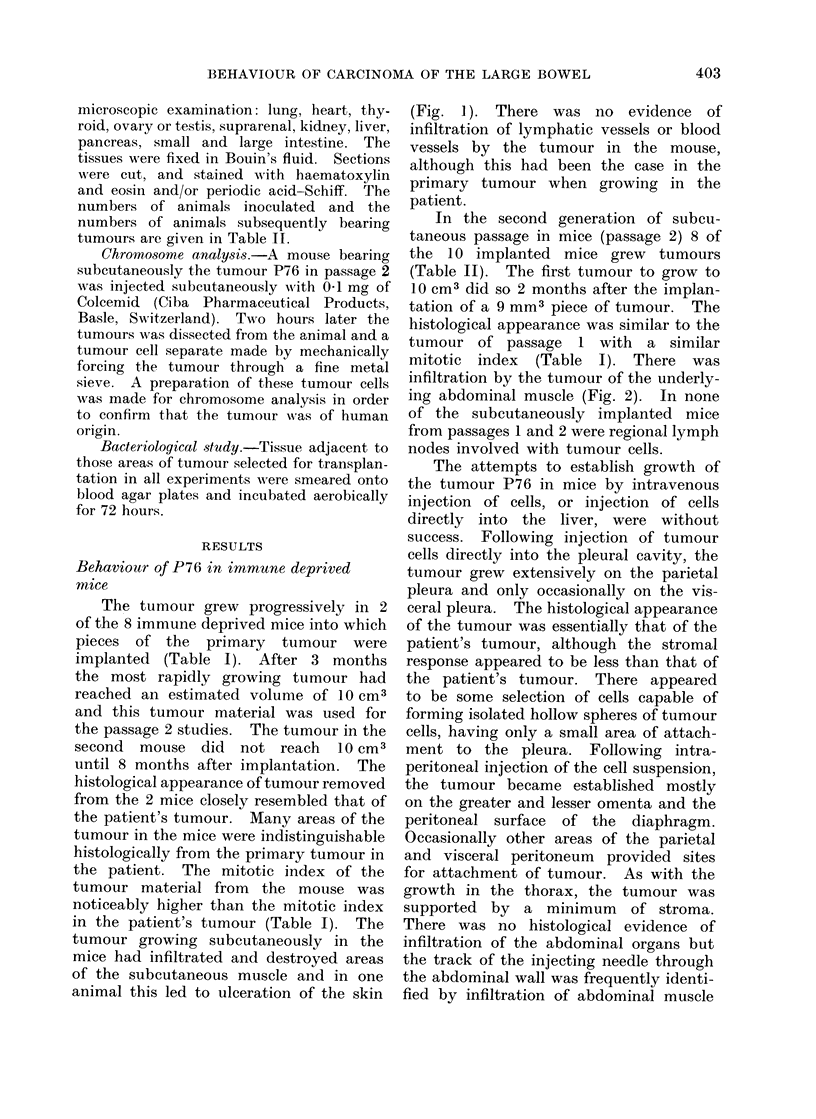
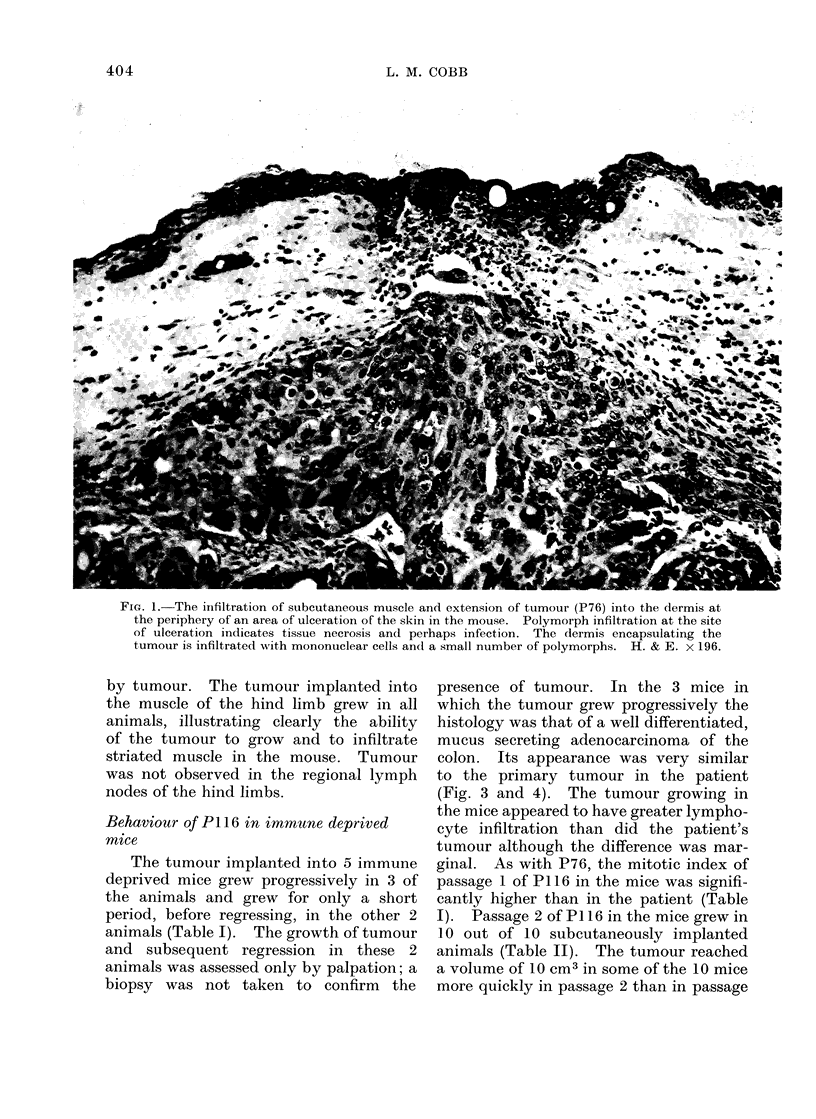
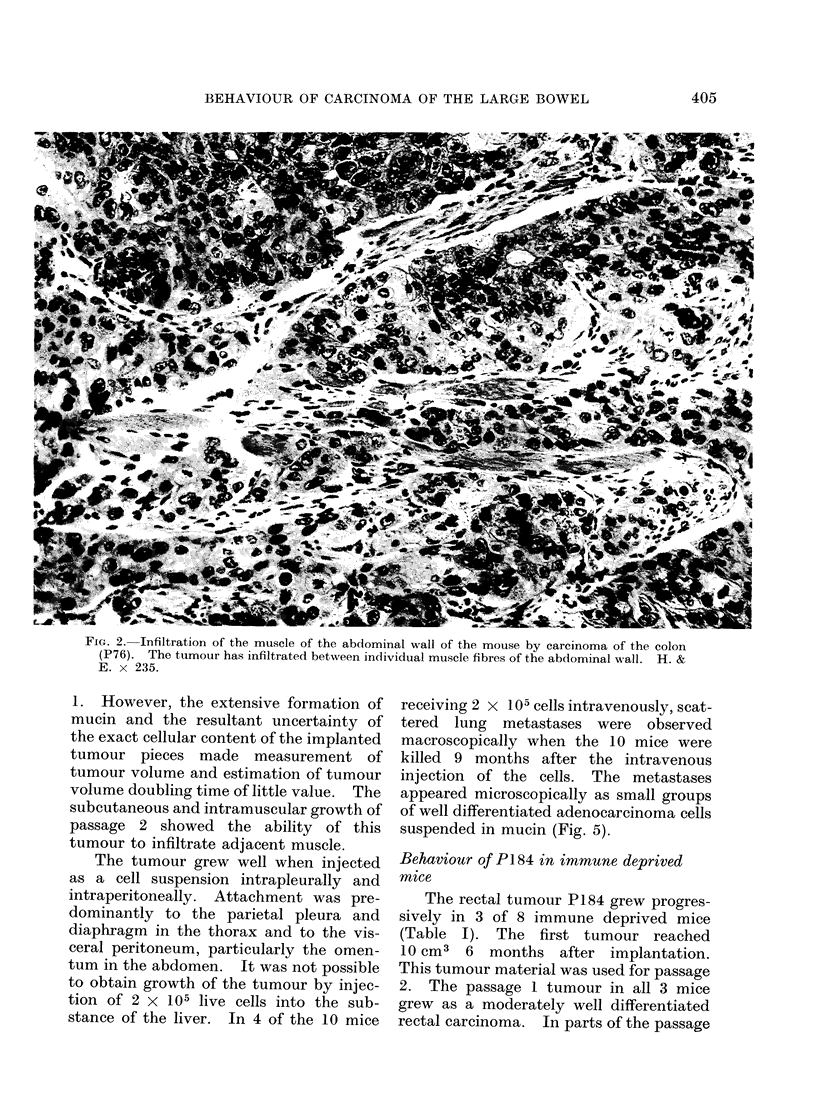
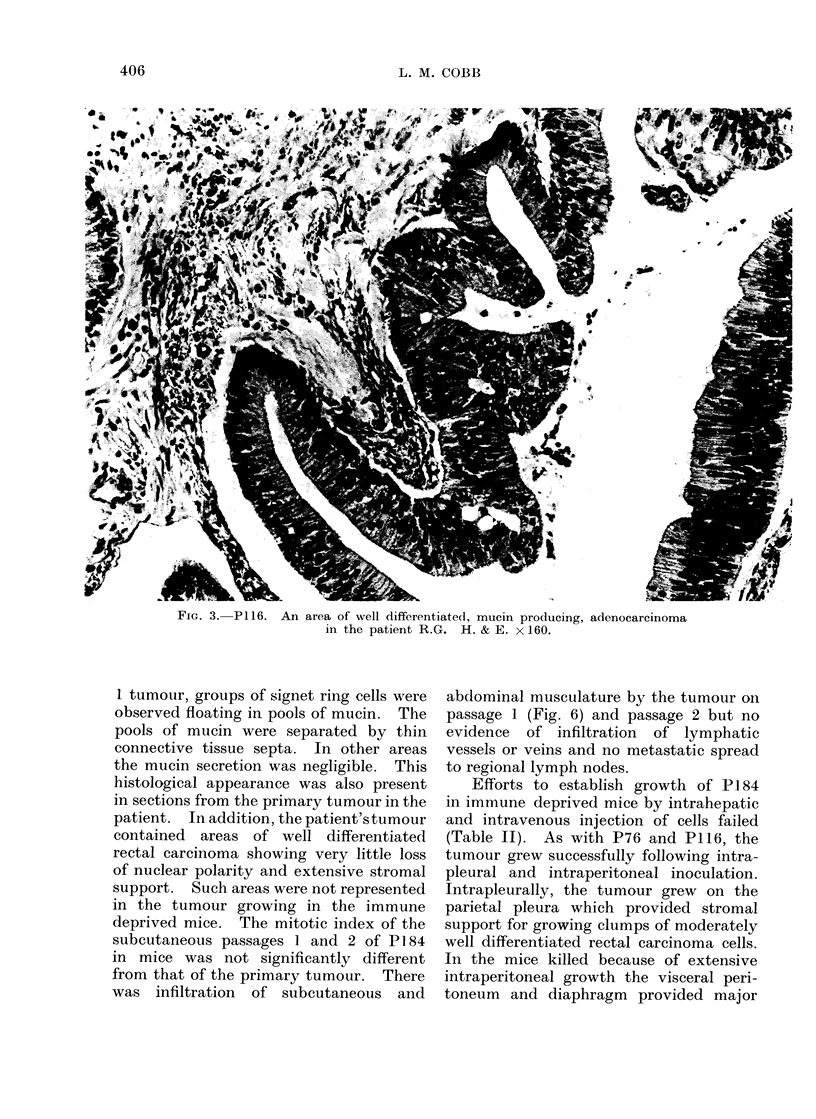

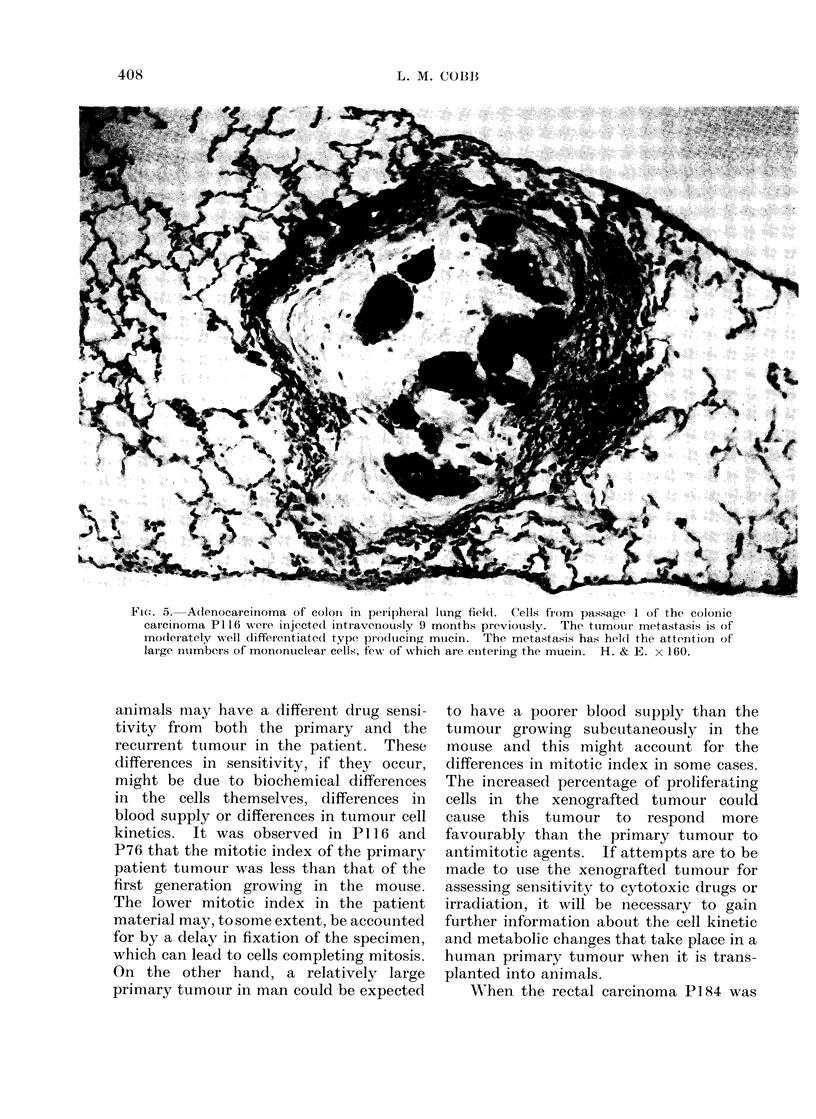
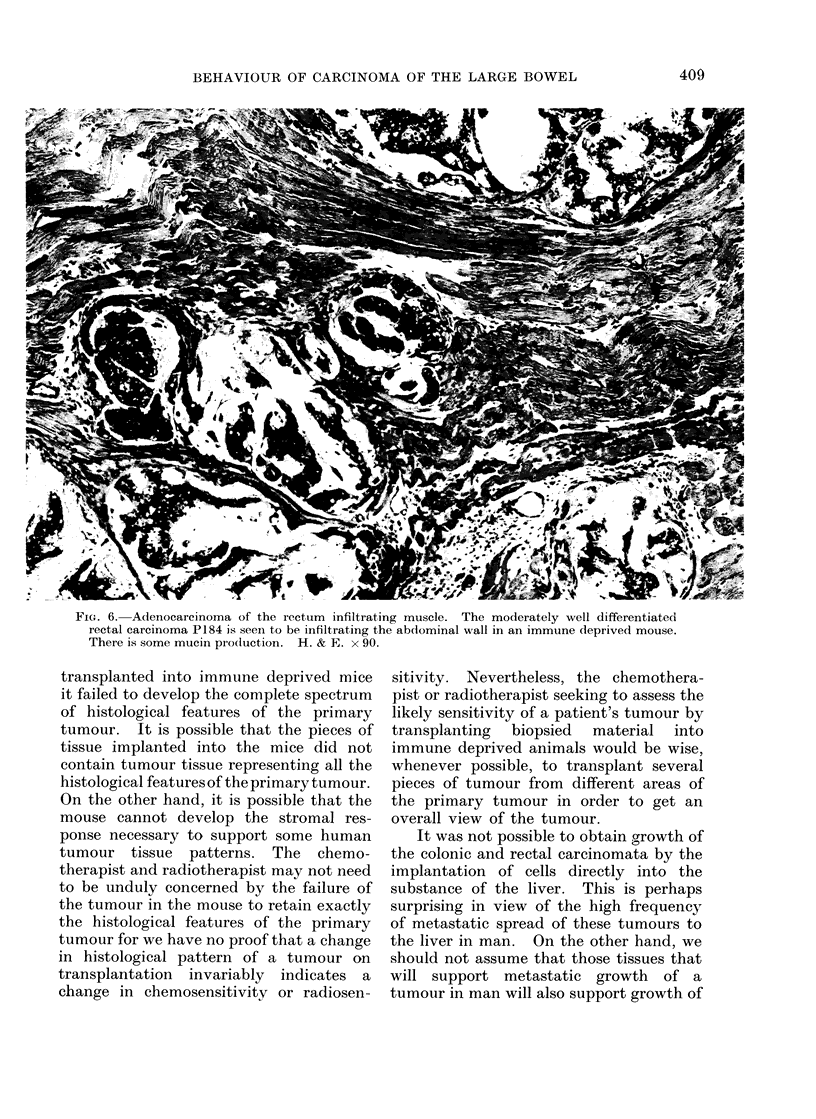
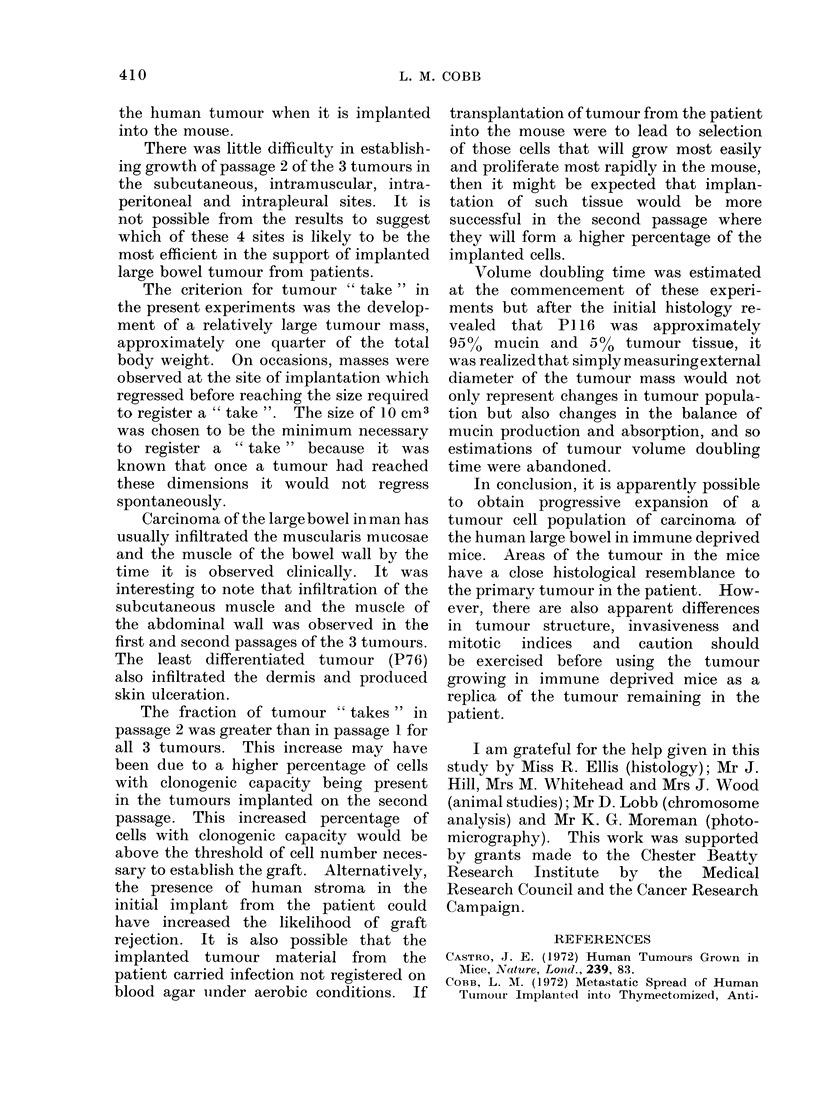
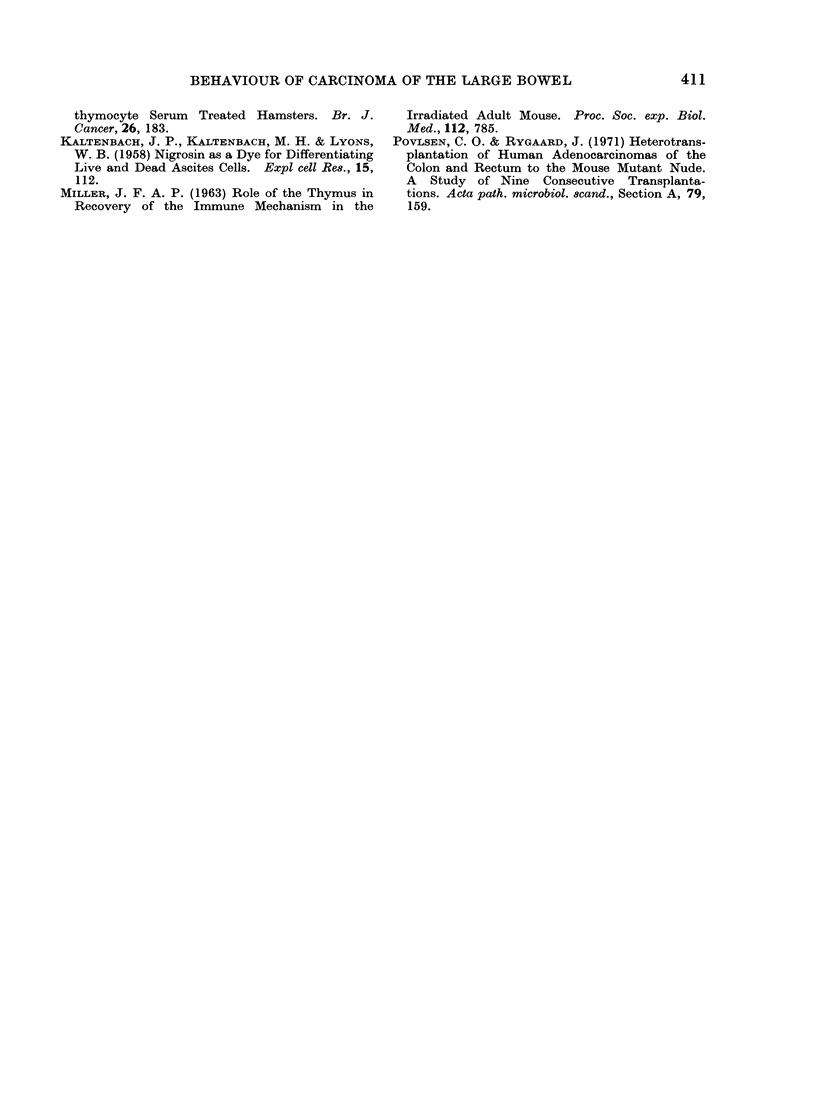
Images in this article
Selected References
These references are in PubMed. This may not be the complete list of references from this article.
- KALTENBACH J. P., KALTENBACH M. H., LYONS W. B. Nigrosin as a dye for differentiating live and dead ascites cells. Exp Cell Res. 1958 Aug;15(1):112–117. doi: 10.1016/0014-4827(58)90067-3. [DOI] [PubMed] [Google Scholar]
- Povlsen C. O., Rygaard J. Heterotransplantation of human adenocarcinomas of the colon and rectum to the mouse mutant Nude. A study of nine consecutive transplantations. Acta Pathol Microbiol Scand A. 1971;79(2):159–169. doi: 10.1111/j.1699-0463.1971.tb03324.x. [DOI] [PubMed] [Google Scholar]








